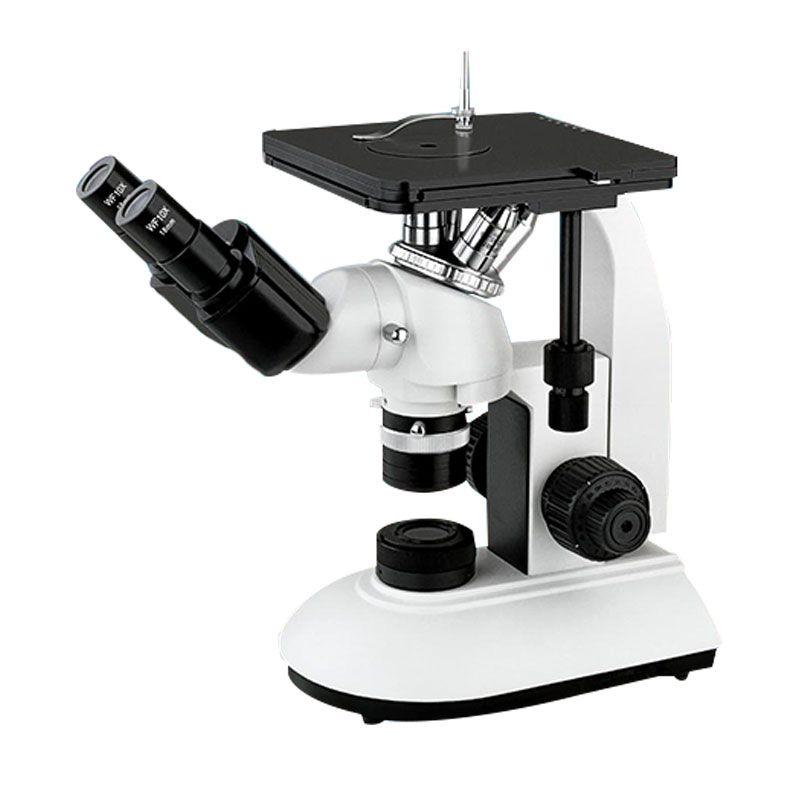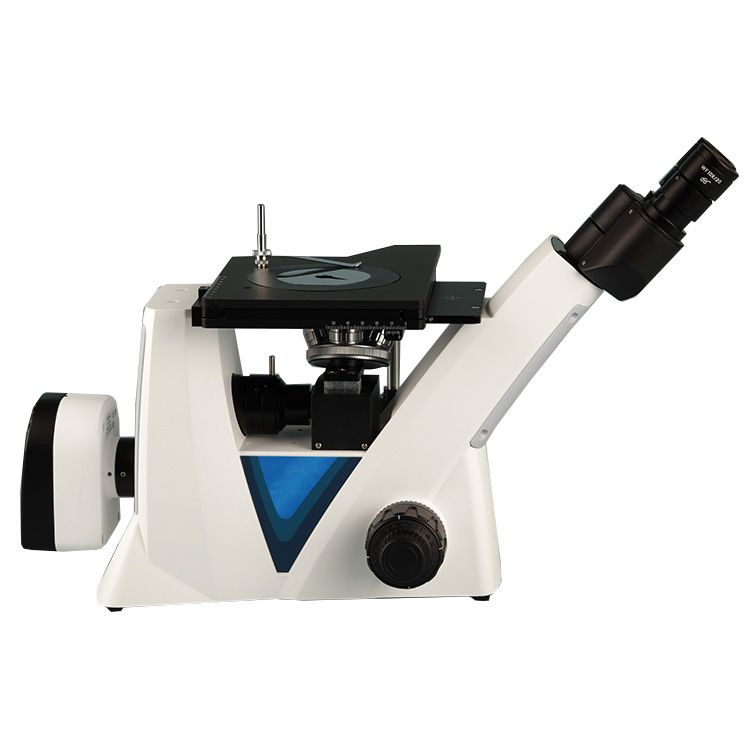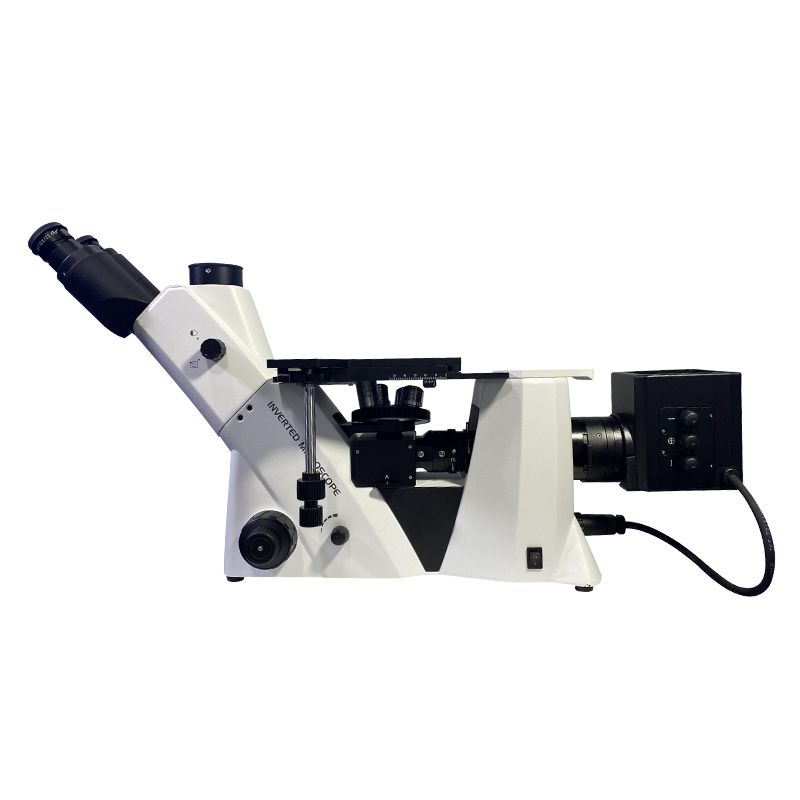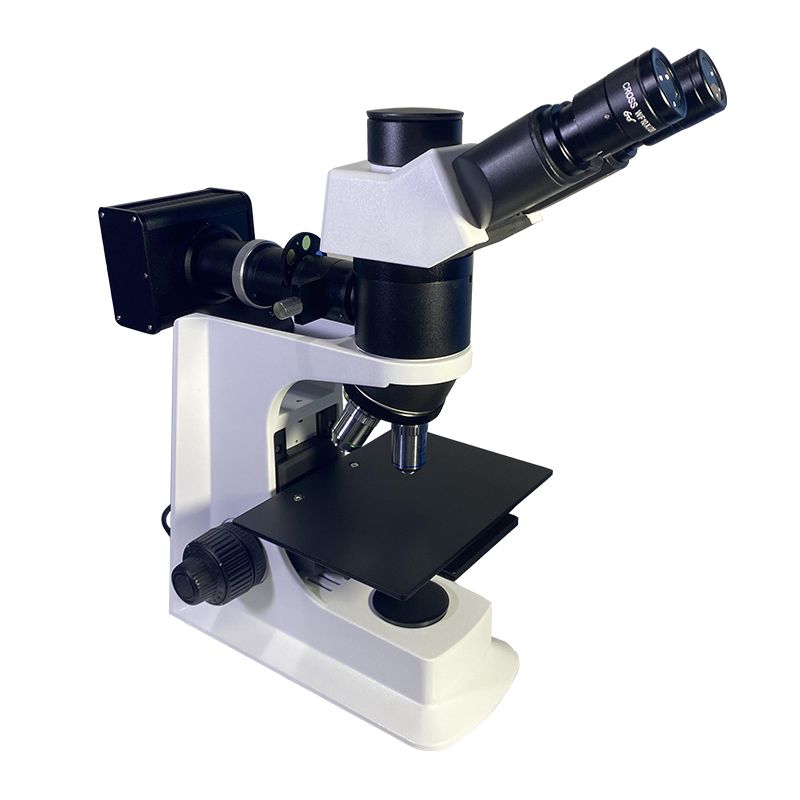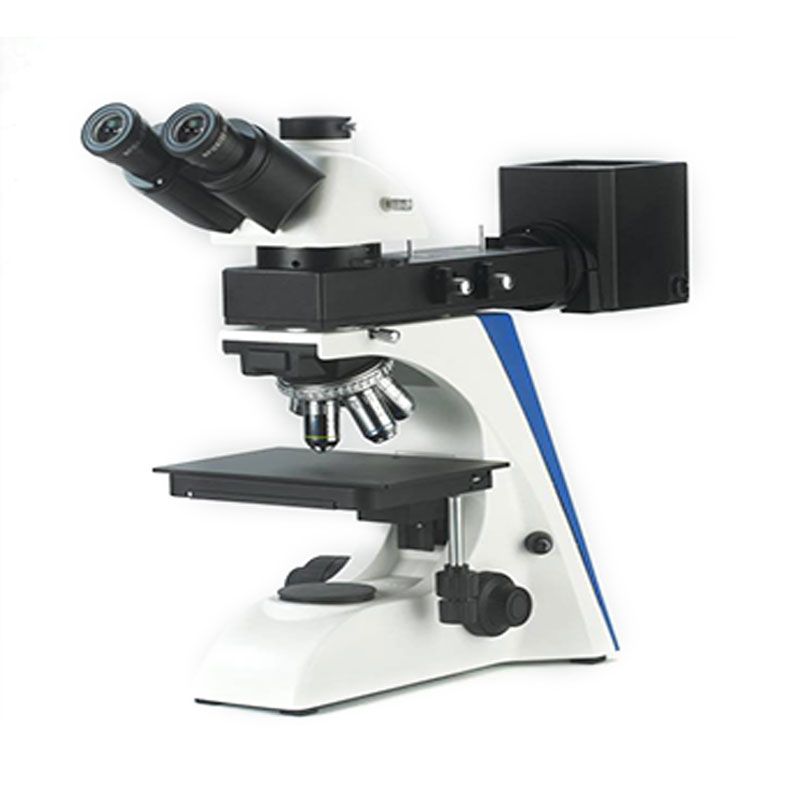The use of metal materials usually follows the relationship of “component-structure-property”. Metallography is the science of studying the internal structure of metals or alloys. Metallography is the study of the microstructure of various metal alloys. It can be more precisely defined as the discipline of observing and judging the chemical and atomic structure and spatial distribution of grains, compositions, inclusions, or phases in metal alloys. Metallographic microscopes are essential tools for the study of the microstructure of metals and alloys. They allow us to see the tiny details of the metal’s structure, which can provide valuable information about its properties and performance. In this comprehensive guide, we will discuss the main features of metallographic microscopes, the process of metallographic sample preparation, and the applications of metallographic microscopes.
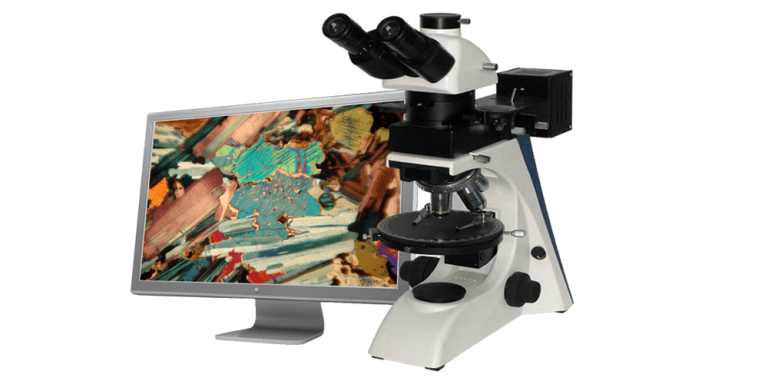
What is the Metallographic Microscope?
The metallographic analysis adopts the principle of quantitative metallography and determines the three-dimensional spatial morphology of the alloy structure by measuring and calculating the metallographic microstructure of the ground surface or thin film of a two-dimensional metallographic sample, thereby establishing a quantitative relationship between alloy composition, structure, and properties.
A material’s performance can be better understood by examining and quantifying its microstructure. Therefore, metallography is used at almost all stages of a component’s life: from initial material development to inspection, production, manufacturing processes, and even the required defect analysis.
9 Features of the Metallographic Microscope
Metallographic microscopes possess several features that distinguish them from standard optical microscopes. Some of the main features include:
- Polarized Light Capability: Many metallographic microscopes are equipped with polarizers and analyzers, allowing for the examination of birefringent materials. This feature is essential for studying the optical properties and textures of crystalline structures in metals and alloys.
- Episcopic and Diascopic Illumination: Metallographic microscopes typically offer both episcopic (reflected) and diascopic (transmitted) illumination options. Reflected light is used for examining the surface features and microstructures of opaque specimens, while transmitted light is employed for transparent or thinly-sectioned specimens.
- Reflected Light Observation: Metallographic microscopes are designed to accommodate reflected light observation, enabling the examination of polished metal surfaces without the need for thin sectioning. This feature is particularly useful for analyzing the surface morphology, grain structure, and defects in metal samples.
- High Magnification Range: Metallographic microscopes often offer a wide range of magnification options, allowing users to observe specimens at various levels of detail. Magnifications can range from low (e.g., 50x) to very high (e.g., 2000x or more), depending on the specific microscope model and objectives used.
- Long Working Distance Objectives: Metallographic microscopes typically feature long working distance objectives, which allow sufficient space between the objective lens and the specimen surface. This is particularly important when examining polished metal samples, as it enables the use of auxiliary equipment such as polishing fixtures and etching chambers.
- Interchangeable Objectives and Optical Components: Metallographic microscopes often have interchangeable objectives and optical components, providing flexibility in adapting the microscope setup to different applications and sample types. Users can select objectives with various magnifications, numerical apertures, and specialized features such as darkfield or phase contrast.
- Integrated Imaging Systems: Many modern metallographic microscopes come equipped with integrated imaging systems, including digital cameras and software for capturing and analyzing images. These systems enable users to document microstructural features, perform quantitative analysis, and share findings more efficiently.
- Ergonomic Design: Metallographic microscopes are typically designed with ergonomic considerations to enhance user comfort during prolonged observation and analysis sessions. This may include features such as adjustable eyepieces, tilting viewing heads, and ergonomic stage controls.
- Compatibility with Accessories: Metallographic microscopes can be used with a variety of accessories and attachments to enhance functionality and accommodate specific applications. These may include polarizing filters, DIC (differential interference contrast) modules, fluorescence attachments, and motorized stages for automated scanning.
Overall, the main features of metallographic microscopes are tailored to the specific requirements of analyzing metallic samples, providing researchers and engineers with the tools needed to study microstructures, defects, and properties of metals and alloys in detail.
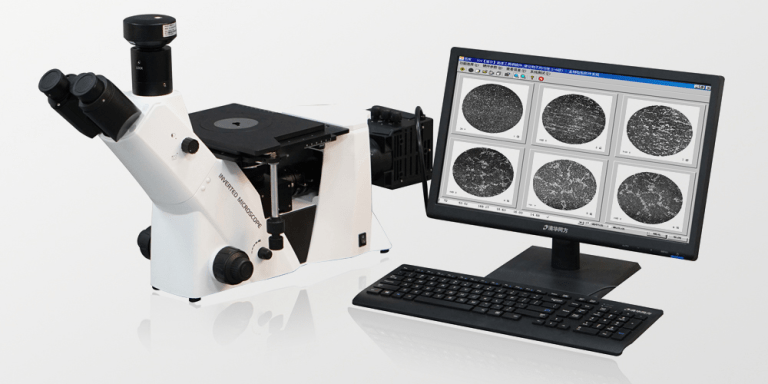
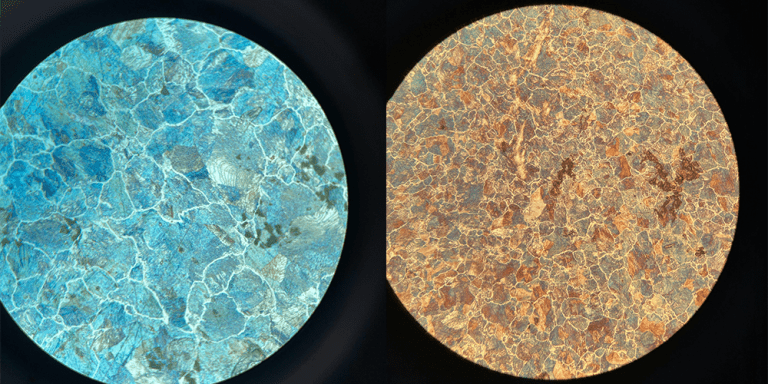
What is the Process of Metallographic Sample Preparation?
Metallographic samples are directly observed, analyzed, and studied under a microscope. The observation surface of metallographic samples has high requirements for smoothness, and it needs to be as bright as a mirror without scratches. In the process of metallographic analysis, sample preparation is a crucial link, which generally includes five processes: sampling, rough grinding, fine grinding, polishing, and etching.
1. Sampling
Selecting appropriate and representative samples is an extremely important step in metallographic microscopic analysis. The selection of sampling locations and grinding surfaces should be determined according to the analysis requirements.
2. Coarse grinding
Rough grinding has three main purposes:
- Trim. Irregular-shaped specimens must be rough ground and trimmed into regular-shaped specimens.
- Smooth. The incision of the sample is often not smooth enough. To smooth the observation surface and remove the deformation layer produced during cutting.
- Chamfer. Without affecting the purpose of observation, the edges and corners on the sample need to be ground off to avoid scratching the sandpaper and polishing fabric (for samples that need to observe surface structures such as carburized layers and decarburized layers, the edges cannot be rounded. It is better to inlay).
3. Finely grind
After rough grinding, the specimen will inevitably have thicker and deeper wear marks on the grinding surface. To further eliminate these wear marks, fine grinding must be performed. There are two main types of fine grinding: manual grinding and mechanical grinding.
4. Polishing
The purpose of polishing is to remove the fine grinding marks left on the grinding surface after fine grinding and obtain a smooth mirror surface. Commonly used polishing methods include mechanical polishing, electrolytic polishing, and chemical polishing.
5. Erosion
If the polished sample is directly observed under a microscope, only a bright light can be seen. Except for some non-metallic inclusions (such as MnS and graphite, etc.), the various components and their morphological characteristics cannot be identified. It must be used Only when the etchant “etches” the surface of the sample can the true microstructure be seen.
There are many etching methods, the most commonly used is chemical etching, which uses the chemical dissolution and electrochemical etching of the sample by the etching agent to expose the tissue.
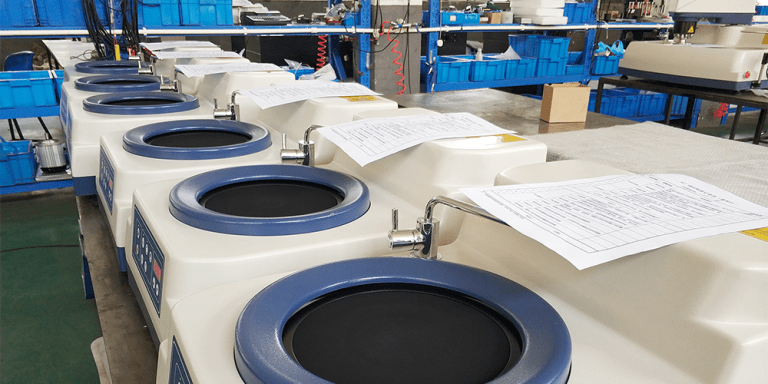
What are the Applications of the Metallographic Microscope?
Metallographic microscopes are specialized instruments used for examining the microstructure of metals and alloys. These microscopes have various applications across different fields, including:
- Material Science and Metallurgy: Metallographic microscopes are extensively used in material science and metallurgy to study the microstructure of metals and alloys. This includes examining grain structure, phases, inclusions, porosity, and other microstructural features, which are crucial for understanding the properties and behavior of materials.
- Quality Control in Manufacturing: In industries such as automotive, aerospace, electronics, and manufacturing, metallographic microscopes are used for quality control purposes. By analyzing the microstructure of metal components, manufacturers can ensure that products meet specified standards and performance requirements.
- Failure Analysis: Metallographic microscopy is an essential tool in failure analysis investigations. When metal components fail prematurely or exhibit unexpected behavior, metallographic examination can help identify the root cause of the failure, whether it be defects in manufacturing, material anomalies, or environmental factors.
- Research and Development: Researchers in academia, government laboratories, and industry use metallographic microscopes to develop new materials and manufacturing processes. By studying the microstructure of materials under different conditions, researchers can gain insights into how to improve material performance and develop new alloys with enhanced properties.
- Corrosion Studies: Metallographic microscopy plays a crucial role in studying corrosion processes in metals and alloys. By examining the microstructure of corroded samples, researchers can understand the mechanisms of corrosion and develop strategies to prevent or mitigate corrosion damage in various environments.
- Welding and Joining Studies: Metallographic microscopes are used to evaluate the quality of welds and joints in metal components. By examining the microstructure of welded regions, engineers can assess the integrity of the weld and identify any defects or discontinuities that may compromise the structural integrity of the joint.
- Heat Treatment Optimization: In industries where heat treatment processes are employed to modify the microstructure of metals, metallographic microscopy is used to monitor and optimize these processes. By examining the effects of different heat treatment parameters on the microstructure, engineers can tailor the properties of materials to meet specific performance requirements.
Overall, metallographic microscopes are indispensable tools for analyzing the microstructure of metals and alloys, enabling a wide range of applications in material science, manufacturing, research, and quality control.
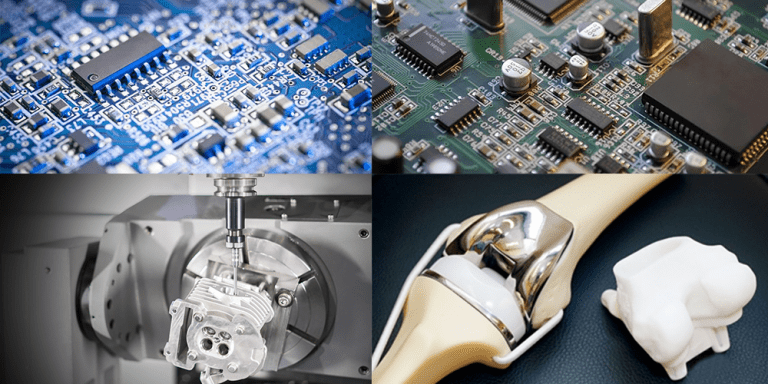
Conclusion
Metal alloys play a prominent role in many technologies and applications due to their wide range of properties. There are currently several thousand standardized alloys available, and this number continues to grow as new needs develop that may require new alloys. Metallography is the study of alloy microstructure, which includes: phase state, microscopic spatial distribution of inclusions, and other components. Various techniques, often microscopes, have been used to reveal the microstructure of alloys. The microstructure of an alloy has a significant impact on many of its important macroscopic properties, such as tensile strength, elongation, and thermal or electrical conductivity. A thorough understanding of the relationship between microstructure and alloy properties is fundamental to the field of metallography. Metallographic knowledge is used in metallurgy (alloy design and development) and alloy production. Metallographic microscopes are essential tools for understanding the microstructure of metals and alloys. Scopelab is a leading supplier of metallographic microscopes. For more details, please contact us.
